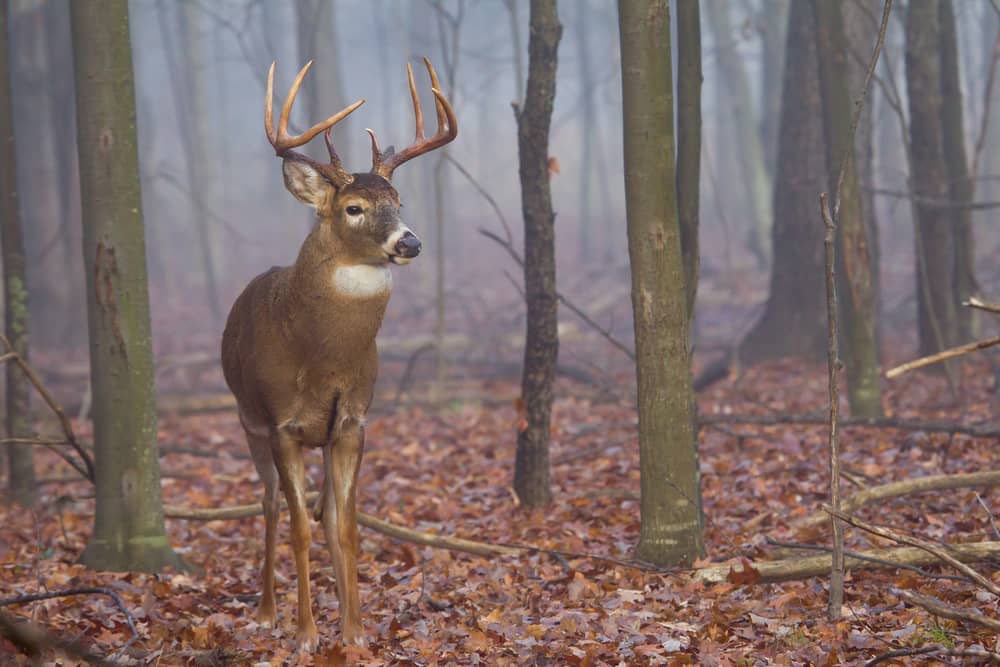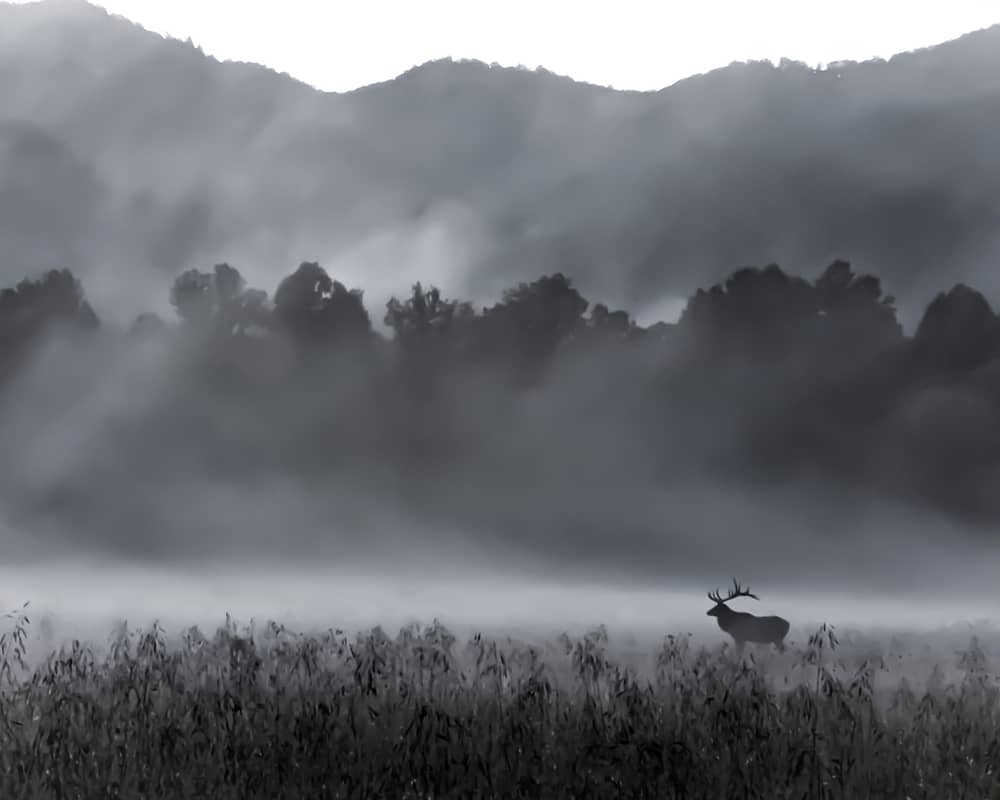Hunters focus much on the deer’s behavior. Furthermore, most hunters are aware of when deer migrate. Yet it’s difficult to interpret deer movement when there’s fog. So, do deer move in the fog?
A foggy day may present a wonderful hunting chance. Deer will have a harder time stifling sounds and seeing you coming. Deer are consequently more relaxed when there is fog. The amount of fog will affect your hunting strategy.
Fog is a favorite cover for certain hunters when stalking their prey. While they wait for the fog to clear, some people decide to set up shop close to a food source.
Hunters must understand how every type of weather will affect their prey. You can then choose the tactic that will give you the best chance of succeeding. While organizing a hunting expedition in foggy conditions, keep the following information in mind.
Table of Contents
Do Deer Move In The Fog?

Almost all deer, regardless of the species you are hunting, only move when they feel safe. Actually, the argument over whether or not deer move in the fog is frequently centered on this.
The thickness of the fog typically determines how a deer will react. There will occasionally simply be a thin layer of fog. Visibility may be slightly reduced in this situation, but it won’t be a significant issue. As a result, you will probably witness a lot of deer activity as they continue to roam freely.
The common consensus among seasoned hunters is that deer are more active in light fog, but they tend to become less active as the fog gets thicker.
The deer won’t be able to notice anything in this situation. They might feel very uneasy as a result. They tend to restrict their movements as a result. They will try to locate shelter during this period. This usually entails moving into dense cover. You probably won’t be able to track them down in these places.
Even though there may be a lot of fog in the morning, by midday it usually starts to clear. Deer activity will begin to ramp up again as the fog begins to clear. They will usually be eager to go where there is food. You may have a lot of opportunities to shoot one as a result.
How Does Fog Affect Deer?
There are several important details about hunting that deer do not want you to know. Let’s investigate how deer behave when it is foggy.
Level Of Fog
You need to be aware of the fog’s density if you want to find deer in foggy conditions. The deer’s movements may vary due to this hazy fog. All deer species only move when they feel secure. Whether or not deer move in the fog, this is absolutely true.
Under the protection of the fog, deer feel safe. Predators may have a harder time spotting them if there is a lot of fog. But, they can also be unable to detect any impending threat. Deer are more active in light fog, according to seasoned hunters, but they tend to go silent as the fog thickens.
Some factors should be taken into account as they could influence how deer behave while it’s foggy outside. They have a big impact on how successful your hunt is. The amount of deer activity is influenced by the temperature, the forest’s size, and the time of day.
Temperature
Deer are significantly impacted by temperature. They leave places where the temperature varies quickly. Because of their sense of smell, they can detect predators at a distance. Their movements are also impacted by this. They might halt when it’s time for bed in the summer.
Cooler weather occasionally permits them to roam. This is for the fog that serves as cover for them. The humidity of a place is impacted by fog as well. Deer may or may not move the fog, depending on whether or not the fog can affect local temperature.
Time Horizon
Deer only roam at certain hours of the day. The early morning hours are when deer are typically most active. The sun may be temporarily obscured by light and medium fog. In essence, this gives the deer the impression that daylight has arrived.
Many expert hunters think they still have the cover that the early morning light affords them. Deer will probably start acting more naturally. According to the most recent study, deer mobility peaks between 6 am and 8 am or 5 pm and 7 pm, with most movement occurring between 9 am and 4 pm.
Wooded Areas
In the forest, deer move in a variety of ways. They don’t spend a lot of time in one location. For a number of reasons, they visit a different area of the forest.
The deer may visit forests if there is fog because it provides natural cover. especially over watery areas. Deer prefer to drink from streams and waterfalls. They will therefore frequently visit these locations to drink if there is a little fog overhead.
Wind Direction
Wind speed isn’t directly impacted by fog, but it does have an impact on how sounds and odors travel through the air.
It is less likely that odors will travel as far as they do in “normal” settings since fog makes the air around it denser.
The deer will be less able to identify you in thicker fog, which can be advantageous for hunters. In fact, according to some hunters, this is the reason why people think that deer move more in the fog.
Deer employ wind manipulation to detect predators even though it is extremely difficult to see through the dense fog. They put more faith in their nose than in their vision. Deer calling locations at night are influenced by wind gestures as well as deer migration patterns.
They have such faith in the wind. They are somewhat more open to being hunted as a result. They move in opposing directions in response to the breezes. They are kept safe as a result of this. As the wind’s direction changes, they will avoid traveling in the same direction.
How Can You Find Deer in the Fog?

Being able to anticipate deer movements is essential for successful hunting in the fog. Keep in mind that they won’t want to move far in a dense fog. But, it will be difficult for you to locate them.
As a result, as the fog lifts, you must take up position where you anticipate the deer to appear. You’ll have a good chance of observing some action if you can position yourself near a supply of food.
You ought to look in a few specific locations. Acorns, soybeans, oats, turnips, and other such items will be suitable. Particularly following a fog, foods like spoiled corn can work well as an attractant.
You will become better at determining which food sources the deer will choose the longer you hunt a particular region. With the use of this information, you can arrange your quest to maximize your chances of success.
You will have some mobility if the fog is lighter. To start, you can still go hunting. A similar strategy to the one previously mentioned is used in this. Embrace the deer’s attraction by positioning yourself there. After that, await their arrival.
You might also try looking for them. You may get a tactical edge and increase your chances of hitting the target by using the fog as cover. You must first locate the deer, though.
You’ll have to make use of your senses to find them. Pay attention to any tree branches rustling or twigs cracking that can indicate their presence. Moreover, use your nose.
Also, it’s crucial that you move slowly. The deer have good vision despite the fog. They will be capable of identifying quick motions. You have a high chance of sneaking up on them and getting a good shot when you move more slowly.
Final Thoughts
Do deer move in the fog? Yes, it depends on the depth of fog. If you know where the deer are moving, deer hunting in the fog may be both fun and simple. You can become an expert and have simple hunting with only a few simple things.

